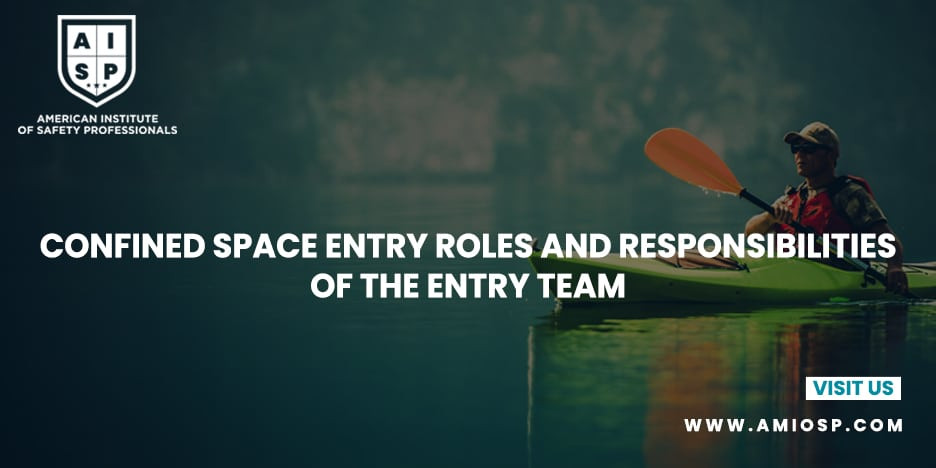Introduction:
Confined space entry requires a coordinated team effort to
ensure the safety of workers. Each member of the entry team plays a critical
role in managing the risks associated with working in confined spaces.
Understanding the specific roles and responsibilities of the entry team is
crucial for establishing effective communication, coordination, and
accountability. This blog post aims to outline the key roles within the entry team
and their respective responsibilities, emphasizing the importance of teamwork
in confined space entry.
- Entry
Supervisor:
The entry supervisor is responsible for overseeing the
entire confined space entry operation. Their main duties include:
- Conducting
a thorough assessment of the confined space and ensuring all necessary
safety measures are in place.
- Authorizing
entry and verifying that all required permits, procedures, and training
are completed before entry begins.
- Communicating
with the entry team members and ensuring they understand their roles and
responsibilities.
- Monitoring
the entry operation and periodically reviewing the conditions inside the
confined space.
- Coordinating
emergency response and rescue procedures.
- Attendant:
The attendant, also known as the "hole watch" or
"standby person," is stationed outside the confined space and
maintains constant communication with the workers inside. Their
responsibilities include:
- Monitoring
the entry from outside and maintaining constant visual contact with the
entrants.
- Keeping
a record of personnel entering and exiting the confined space.
- Continuously
monitoring atmospheric conditions and promptly reporting any changes or
hazards.
- Maintaining
communication with the entrants through verbal, visual, or electronic
means.
- Activating
emergency procedures in case of an incident or hazardous condition.
- Entrant:
Entrants are the workers who physically enter the confined
space to perform the assigned tasks. Their responsibilities include:
- Participating
in confined space entry training and understanding the hazards associated
with the specific space.
- Following
the entry procedures and using the required personal protective equipment
(PPE).
- Conducting
atmospheric testing before entry and regularly monitoring conditions
during work.
- Informing
the attendant immediately if there are any signs of danger, discomfort, or
exposure to hazards.
- Following
established communication protocols and promptly responding to signals or
instructions from the attendant.
- Entry
Team Coordinator:
In larger confined space operations, an entry team
coordinator may be assigned to ensure effective coordination between multiple
entry teams. Their responsibilities include:
- Coordinating
entry operations across multiple confined spaces.
- Ensuring
that the necessary permits, procedures, and resources are in place for
each entry team.
- Communicating
and exchanging information between the entry teams and the entry
supervisor.
- Assisting
with emergency response coordination and ensuring adequate resources are
available for rescue operations.
- Rescue
Team:
The rescue team plays a crucial role in confined space
entry, even if they are not directly involved in the initial entry. Their
responsibilities include:
- Participating
in confined space rescue training and maintaining readiness to respond to
emergencies.
- Familiarizing
themselves with the layout, hazards, and specific rescue procedures for
each confined space.
- Assisting
in the development and review of rescue plans and procedures.
- Being
prepared to enter the confined space in case of an emergency to rescue
trapped or injured workers.
Conclusion:
The successful execution of confined space entry operations
depends on the clear understanding and effective execution of each team
member's roles and responsibilities. The entry supervisor, attendant, entrants,
entry team coordinator, and rescue team all play vital parts in ensuring the
safety of workers. By establishing strong communication, proper training, and a
culture of teamwork, employers can minimize risks and create a safe environment
for confined space work. Remember, regular training, practice, and ongoing
communication are crucial to maintaining a high level of safety and readiness
within the entry team.












0 comments
No Comments